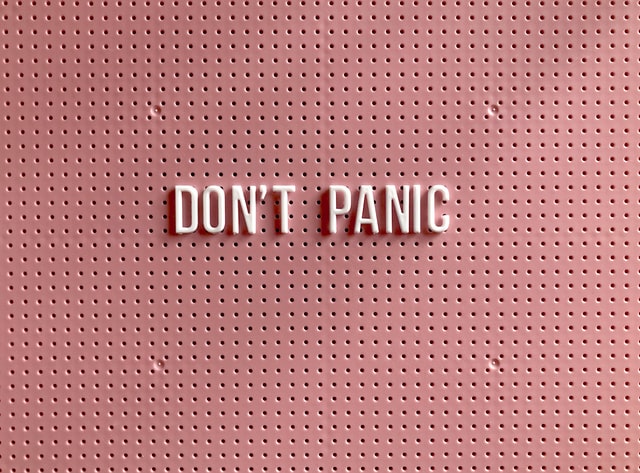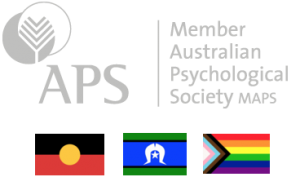Anxiety – or fear – is a normal human emotion. It is a part of the normal response to threat. When an individual detects danger, fear increases the chances of survival by preparing us to run, defend or still ourselves; also known as the fight, fight or freeze response. Anxiety has an important function in maintaining our safety and our survival.
In modern life, there are many sources of threat, some pose more risk than others. Imagine crossing a road, and suddenly a car comes screeching around the corner, careering wildly out of control. The sudden activation of arousal increases the ability of your body to respond and move out of the way as fast as possible, hopefully saving your life.
Sometimes, however we may experience intense levels of arousal when there is no threat of physical danger, the threat is how we are perceived by others or the fear of being unable to escape. This might include, being in large crowds, speaking in front of others, travelling on public transport. The mind appraises that there is a threat in these situations, and the body responds accordingly.
At other times, there may be no identifiable trigger and the anxiety response may seem unexpected and come out of the blue. This can be extremely frightening, however, the explanation is straight forward. When we are anxious our breathing becomes shallow, this symptom of hyperventilation can lead to feelings of dizziness and light-headedness and can ultimately lead to a panic attack. We may also have become conditioned to have panic attacks in certain places or with certain people or with particular objects around.
Panic attacks are not dangerous, but they are extremely frightening. Intense anxiety can accumulate into a panic attack. Up to 40 per cent of the population will experience a panic attack at some time in their life. However a panic attack does not mean you have panic disorder. According to Beyond Blue, approximately 5 per cent of people in Australia will experience panic disorder in their lifetime, with 2.6 per cent experiencing panic disorder over a 12-month period. A proportion of people can also experience panic attacks in their sleep, and wake up flooded with fear.
Symptoms of panic attacks can include:
Intense fear
Dizziness
Increased sweating
Increased heart rate
Chest pain
Believing that you are dying or losing control.
Breathing difficulties
Tingling or numbness
Feeling a ‘derealisation’ – a feeling that the world around you is not real
Feeling ‘depersonalization’ – a feeling that you are detached like being an observer of oneself. It can include experiences like the sense that your body, legs or arms appear distorted, enlarged or shrunken, or that your head is wrapped in cotton.
Panic attacks usually peak at 10 mins. People often report feeling exhausted afterwards. People may also be frightened that they are going to die, or that they are having a heart attack. Many people call an ambulance only to be told they are having a panic attack.
It is understandable that if someone experiences regular panic attacks, they become afraid and begin to worry about when the next panic attack might occur. This is fear of fear. It is also understandable that one would seek to minimise exposure to stressful situations that might trigger panic. This is how avoidance behaviours begin.
Avoidance behaviours are how Panic Disorder develops. Panic Disorder is essentially an excessive concern about the recurrence of a panic attack where the individual changes (typically restricts) their behaviour in the hope of preventing further panic attacks. For example, not exercising, not taking public transport, avoiding places where panic attacks have occurred in the past. However, this avoidance doesn’t work in the long term. Ultimately we can’t predict or control our lives. Missing out on new experiences, and isolation due to avoidance can compound mental health problems, leading to depression.
When we continuously avoid difficult situations because of fear of fear, we also don’t learn that we can cope. We miss out on the opportunity to practice or even master our fears.
Panic attacks are NOT dangerous. They feel awful, but they are not life threatening.
What are some things I can do if I am having a panic attack?
Controlled breathing
Over breathing or hyperventilation (as part of the flight/fight/freeze response) can disrupt the balance of carbon dioxide and oxygen in our blood. This imbalance leads to many of the symptoms associated with panic (i.e dizziness, confusion, clammy hands, increased heart rate).
Slowing the rate of breathing and ensuring that we are using our diaphragm muscles (as opposed to our chest) is a helpful way to restore carbon dioxide and oxygen levels in the blood. This restoration will lead to a reduction of panic symptoms.
If you have been anxious for some time, you may have a habit of chronic over- breathing, but be completely unaware of it. This increases your overall vulnerability to a panic attack. A good test to see if you naturally over breathe is to count how many breaths you take in a minute. When relaxed your breathing rate should be between 10-14 breaths. Below is an example of a breathing technique that you can use. You can use this technique while experiencing a panic attack. You can also use breathing techniques at scheduled times throughout the day to reduce your overall vulnerability to further attacks. In addition to this, there are other things you can do to manage anxiety and reduce the chances of a panic attack. These are listed below.
Breathing Technique for panic
- breathe in as slowly, deeply and gently as you can, through your nose
- breathe out slowly, deeply and gently through your mouth
- some people find it helpful to count steadily from one to five on each in-breath and each out-breath
- close your eyes and focus on your breathing
Grounding Techniques – Acceptance of difficult feelings
Grounding techniques are helpful in gently drawing our attention away from our anxious thoughts and feelings, and anchoring us in the present. Instead of struggling against these painful feelings, the practice is focused upon acceptance and a focus upon the here and now.
Here is a simple exercise to ground yourself
Name 5 things you can see
Name 5 thinks you can feel
Name 5 things you can hear
Name 4 things you can see
Name 4 things you can feel
Name 4 things you can hear
Name 3 things you can see
Name 3 things you can feel
Name 3 things you can hear
Name 2 things you can see
Name 2 things you can feel
Name 2 things you can hear
Name 1 thing you can see
Name 1 thing you can feel
Name 1 thing you can hear
Examine your thinking
People who experience panic attacks are likely to worry about future panic attacks. They are also very likely to overestimate the likelihood of having a panic attack and the possible negative consequences of this.
Unfortunately, this fear of fear, focuses attention and thoughts on the fear, and can paradoxically lead to further anxiety, which of course can get the ball rolling for a future attack.
Thought challenging techniques help to identify any unhelpful thinking patterns, to reduce the way we estimate threat, change the way we monitor and interpret bodily changes, and find helpful ways to soothe ourselves.
Reduce Avoidance
Wanting to avoid locations, sensations or reminders of previous panic attacks makes perfect sense. Unfortunately, while comforting in the short term, avoidance can lead to greater anxiety in the long term.
A helpful way to start approaching situations that you have been avoiding is to create a list of situations, which you work your way through approaching, whilst also reviewing what happened. Often it can be helpful to see a psychologist to do this.
At the Centre for Clinical Psychology we have a team of clinical psychologists with evidence-based training and experience helping people with anxiety and panic. We understand how challenging it can be to live with anxiety, and we can help you to find ways to reduce the burden of anxiety in your life. Call us if panic is interfering with your life 03 9077 0122.



